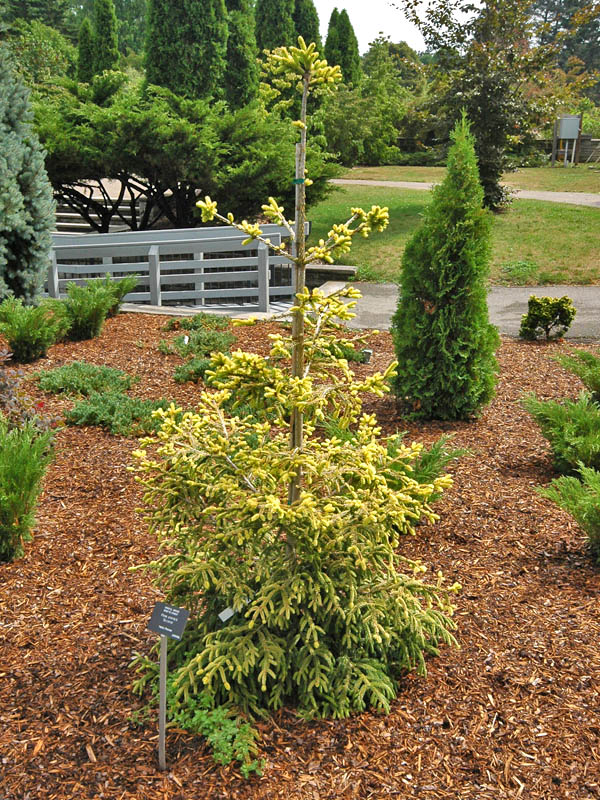| General Description | Slow growing pyramidal tree with horizontal branches that become pendulous. Male flowers a crimson red on the tree with red purple cones that mature to brown. |
| ID Characteristic | Have the shortest needles of the spruce family. Needles are four sided and 5-10 mm long. Having golden foliage all year round that may fade in the winter. Males flowers are crimson red. |
| Shape | Pyramidal, horizontal branches that become pendulous and dense foliage that produces a 'skirt' appearance. |
| Landscape | An excellent ornamental or accent tree used in the landscape such as woodland or any space that needs colour. This tree brightens any space and can be used in groupings or as a singular spectacular specimen. |
| Propagation | Cuttings should be taken in the spring just before or during bud opening or in mid-autumn after plants have been subjected to cool temperatures. Perlite is recommended as rooting medium or peat moss: sand (1:1). Cuttings need 8000 ppm IBA + Benlate (8:1). |
| Cultivation | Average to rich, moist soil but does not like wet, soggy soils, will tolerate droughty conditions. Protect from harsh winter winds by wrapping in burlap. Should provide shade in the hot sunlight to avoid burning. |
| Pests | Aphids, budworm and borers. |
| Notable Specimens | The Gardens of Fanshawe College, London, Ontario, Canada. The Royal Botanical Gardens, Burlington, Ontario, Canada. |
| Habitat | Horticultural origin. |
| Bark/Stem Description | Brown in colour with exfoliating thick scales giving it a peeling appearance. Small round lenticels can be seen on the bark. Most of the bark is hidden by the dense appressed foliage. |
| Flower/Leaf Bud Description | Ovoid with overlapping scales. 5 mm in length, apex blunt, brown in colour. Buds appear along the stem and at the apex with three forming a triangular shape; non resinous. |
| Leaf Description | Very small, 5-10 mm long, four sided looking like a square peg, having four stomatic bands. Needles are dense and appressed on stem. Golden foliage stays all year long but may fade in the winter months. |
| Flower Description | Monoecious, males are a crimson red colour; appearing like small strawberries. |
| Fruit Description | Cylindrical to ovoid, 5-10 cm long, short stalked. Both male and female cones appear as red and purple changing to brown once mature. |
| Colour Description | Creamy yellow new growth darkens to a rich gold that radiates in the landscape. Some colour fades to dark green but retains some of its golden colour throughout the winter. The cones are a pretty red and purple maturing to brown. |
| Texture Description | Medium, having dominance in the landscape with its bold colour but with the appressed gold foliage it appears soft and feathery. |

